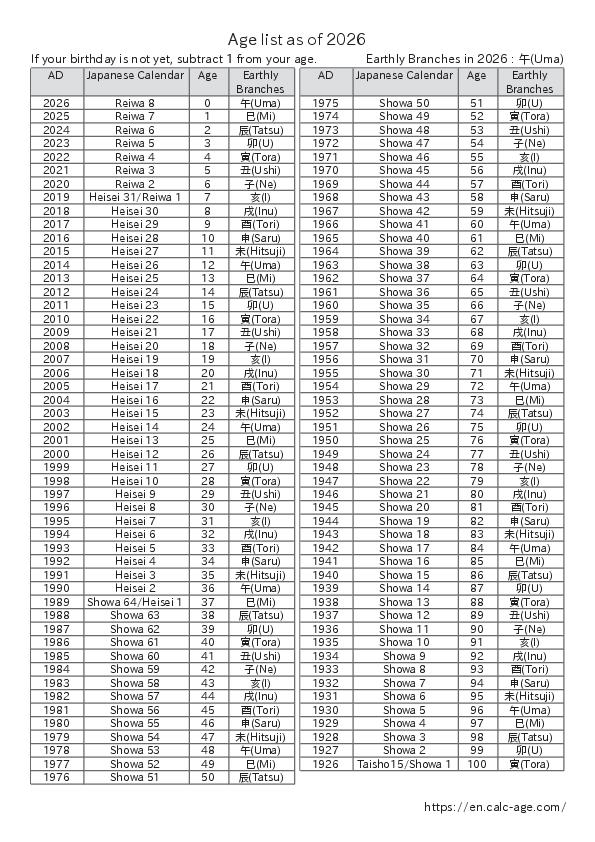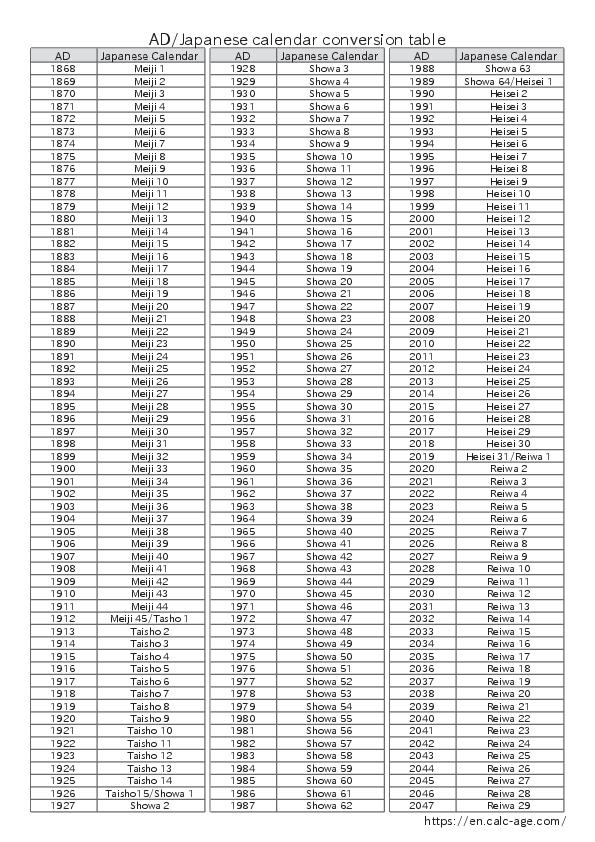Calculate the date of the child's celebration

Calculate the date of various celebration days of children from the date of birth.
Select your date of birth and gender and click the "Calculate the child's celebration" button to display the celebration date.
Children's celebration
Children's celebration list
This is a list of various celebration events since the birth of a child.
You can check the date of each event from the date of birth and gender.
Click here for a detailed description of each celebration.
Oshichiya(お七夜,N ame giving ceremony)
Oshichiya is a celebration held on the 7th night after a baby is born.
We have a "naming ceremony" where we announce the name of the new born baby, and we have a celebratory meal with the people who have gathered.
Omiyamairi(お宮参り,Shrine visit)
Omiyamairi is an event to report to the shrine that a baby is safely one month old, and to pray for their healthy growth in the future.
Omiyamairi is often performed around 31 or 32 days after birth for boys and around 32 or 33 days for girls.
On this site, boys are calculated as 31 days old and girls as 32 days old.
Hatsu-zekku(初節句,First festival)
Hatsu-zekku is the first festival that a baby receives after being born.
Boys celebrate on May 5th on "Tango no Sekku", and girls on March 3rd on "Momo no Sekku".
If Hatsu-zekku comes before Omiyamairi depending on the date of birth, it is common to do Omiyamairi first and then Hatsu-zekku in the following year, so in that case the calculation is for the next year.
Okuizome(お食い初め,First meal)
Okuizome(First meal) is a celebration held on the 100th day after a baby is born.
I imitate feeding the baby with the wish that "I will not have trouble eating."
Half birthday
Half birthday is a celebration for six months after a baby is born.
{0} is a celebration for six months after a baby is born. Celebrate with baby food cakes and sleeping art that takes pictures of sleeping babies with props.
Hatsu-shogatsu(初正月,First new year)
Hatsu-shogatsu is the first New Year for a baby.
Wishing for the good health of babies and protection against evil, they celebrate by decorating "Hamaya", "Hamayumi", and "Hagoita".
Hatsu-tanjo(初誕生,First birth)
Hatsu-tanjo is the baby's first birthday after being born.
There are customs such as "Issho-mochi" and "Erabitori", but recently there are many celebrations that are not bound by formalities.
Shichi-go-san(七五三)
Shichi-go-san is an event to appreciate the growth of children aged 3, 5, and 7 and to pray for their healthy growth and happiness in the future.
Around November 15th, they visit a local shrine, take commemorative photos, and invite their grandparents to a dinner party.
1/2 seijin-shiki(1/2成人式,1/2 coming-of-age ceremony)
1/2 seijin-shiki is an event held at schools and communities to celebrate turning 10, which is half the age of 20.
School events include the presentation of letters from children to parents, singing in chorus, and the awarding of "half-adult certificates."
Jusan-mairi(十三詣り)
Jusan-mairi is a celebration when a child turns 13 at Kazoedoshi.
We pay homage to Kokuzo-bosatsu to express our gratitude for the safe growth we have achieved and our prayers for a happy life.
Seijin'nohi(成人の日,Coming-of-age day)
Seijin'nohi is a national holiday with the purpose of "celebrating young people who realize that they have become adults and try to survive on their own."
Coming-of-age ceremonies are held in each municipality to celebrate and encourage new adults to start their new journey.

